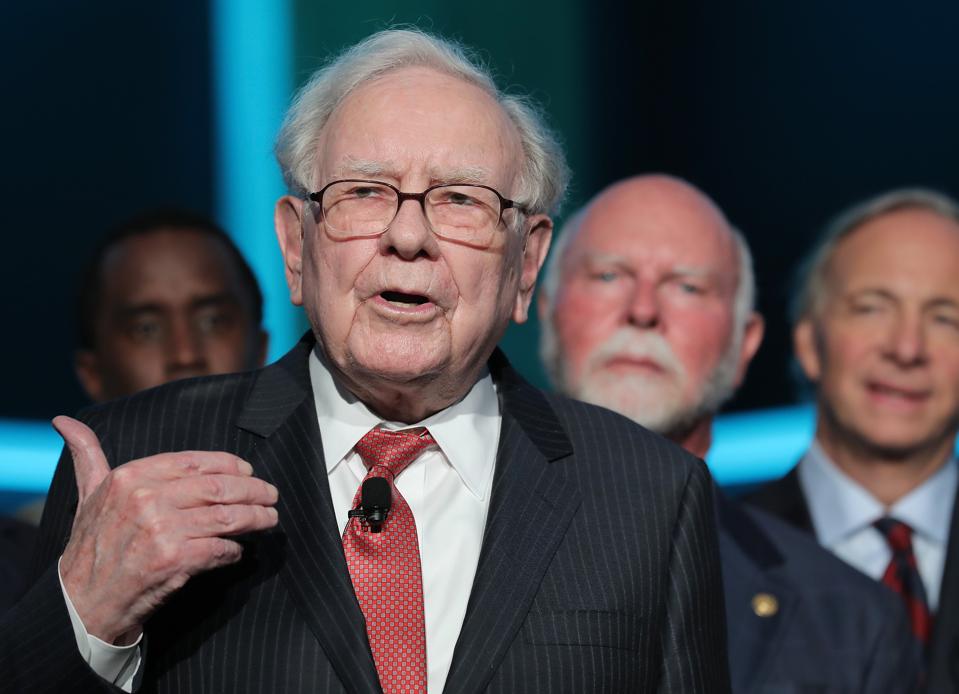While Warren Buffett’s six-decade run at Berkshire Hathaway delivered shareholder returns of an astounding 5.5 million percent, the real story isn’t the math — it’s the model.
Behind the headlines and investment decisions lies a deeper system. Buffett built an institution where long-term thinking, autonomy and culture guide every decision. That model won’t work for every company, but the underlying lessons apply to all boards, especially those navigating leadership transitions, growth or complexity.
At Berkshire, leadership and culture are rooted in accountability, transparency and owner-like thinking. Buffett has spent decades developing complete managers, not temporary deputies.
This is why Berkshire’s model outlasts flashier corporations. The numbers astonish (returns of a compounded 20% per year, vs 10% for the S&P 500), but the lesson is simpler: true leadership isn’t measured by tenure, but by building institutions where excellence becomes inevitable.
Strategic Foresight: The Forever Mindset
Buffett’s mantra — “Our favorite holding period is forever”— wasn’t just investor talk. It was a strategic lens. He avoided trends, chased no hype and focused on companies with long-term competitive moats.
Boards often pressure management for quick wins. Buffett resisted that. He built Berkshire around businesses that could last — not just perform.
Equally critical is knowing what to avoid. Buffett’s rule that “Really successful people say no to almost everything” forced Berkshire to ignore complex deals outside its circle of competence.
Many companies spread themselves thin chasing unrelated ventures. At Berkshire, the filter was simple: if it wasn’t in their circle of competence, they passed.
Boards can apply this by pressing for clarity:
- What’s the long game?
- Where can we win sustainably?
- What should we ignore?
Boards must adopt similar discipline, rejecting shiny distractions that dilute focus.
Finally, alignment matters. Most CEOs are paid for short-term stock performance, or annual bonuses. At Berkshire, leaders win if long-term value compounds. Boards should rethink incentives to match long-term goals.
Capital: Stewardship Before Growth
Buffett called capital allocation a CEO’s most important job. At Berkshire, it’s not just finance —it’s philosophy.
He maintained at least $20 billion in cash, not out of fear, but to stay ready. When crises hit, as happened in 2008, others froze. Berkshire moved fast, investing on favorable terms. Buffett’s rule: “Be fearful when others are greedy, and greedy when others are fearful.”
This only works with discipline. Berkshire avoids overleveraging. Buffett often joked: “I’ve seen more people fail because of liquor and leverage.” He meant it. Debt removes options. When downturns hit, too much leverage turns strong companies into forced sellers.
The principle: protect your ability to act when others can’t. That’s when the biggest gains are made. Capital is not just about investing. It’s about timing, flexibility and restraint. Boards must treat it as strategy, not just a CFO concern.
Governance: Trust Over Bureaucracy
Many conglomerates fail because they centralize everything. They try to force synergies, standardize systems and control decisions from headquarters.
Berkshire did the opposite. It runs 60+ businesses with near-total autonomy. There are no centralized marketing campaigns. No forced integration or common systems. No synergy targets or coordinated go-to-market strategies. Just trust and accountability.
Buffett called it “professional neglect” — an interesting way to describe the absence of bureaucracy. The Omaha office is tiny and focused on two things only: capital allocation and protecting the culture.
This works because Buffett hired people he trusted. Business unit leaders know the rules: protect your moat, send excess cash to HQ and uphold Berkshire’s reputation.
Boards often overbuild processes to control risk. At Berkshire, the control comes from clarity and culture. Simpler rules, stricter values.
The lesson: culture scales better than control. Trust your people, and hold them accountable to the right few things.
Succession: Long Term, Low Drama
Buffett’s final leadership move — handing over to Greg Abel — was the product of decades of quiet planning.
He signaled his intentions years in advance. In 2006, he wrote that three CEO successors were already identified, and the board knew who would take over if needed. No last-minute scramble and no uncertainty.
Abel’s path was typical of Berkshire’s style: earned trust over 20+ years, proven cultural fit and strong leadership across different businesses. Buffett focused on character over credentials (“I never look at where a candidate has gone school”), observing how leaders handled pressure, made decisions and earned followership.
At the same time, he wasn’t afraid to bring in outsiders. Todd Combs and Ted Weschler were external hires, brought in to expand the leadership pipeline. External benchmarking ensured Berkshire stayed sharp — and that internal candidates were tested, not assumed.
When the time came, Buffett’s announcement was simple: Abel would become CEO. The market barely flinched.
That’s what good succession looks like: prepared, aligned, uneventful.
Final Thoughts: Build Systems, Not Stars
Buffett’s biggest legacy isn’t the returns. It’s the model: a culture that lasts beyond the founder.
Boards should resist the temptation to chase the next Buffett. Instead, they should build structures where strategy, capital, leadership and trust compound over time. That means asking tough questions early, aligning rewards to long-term success, and treating governance as stewardship, not control.
As Buffett once said: “Someone’s sitting in the shade today because someone planted a tree long ago.” Great boards, which think decades ahead and act accordingly, are the planters.
By Nuno Fernandes, Professor of Financial Management at IESE Business School.

